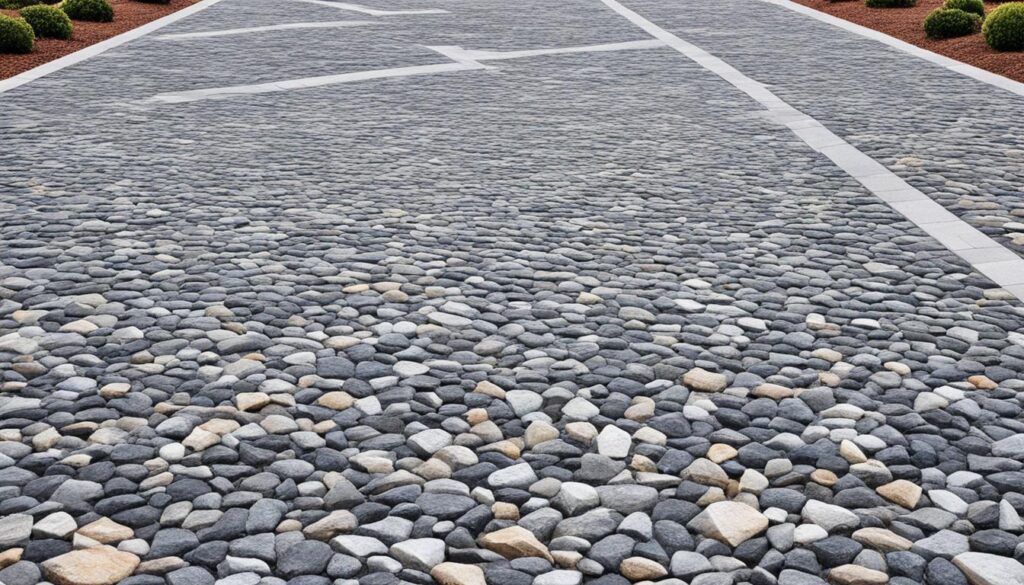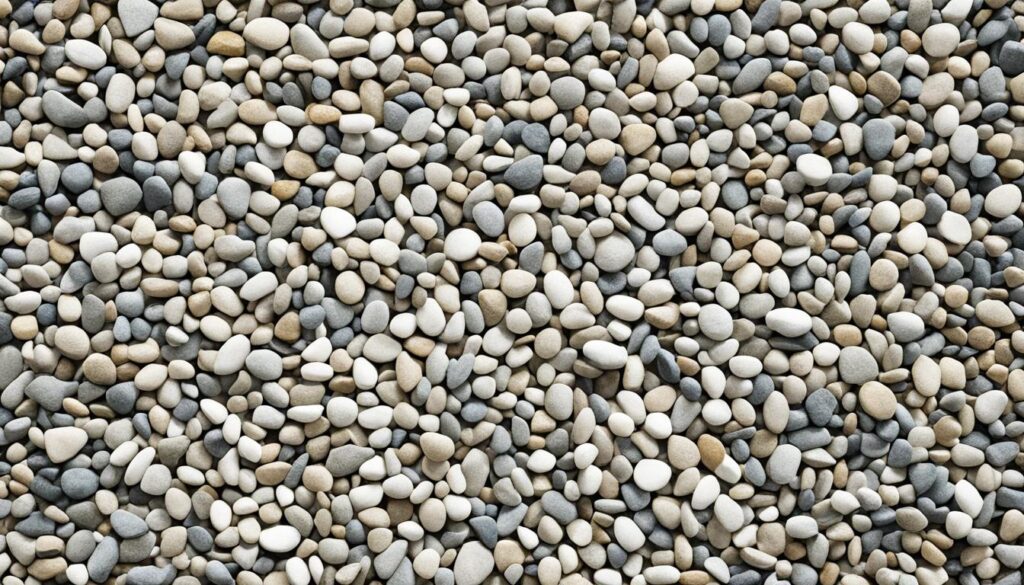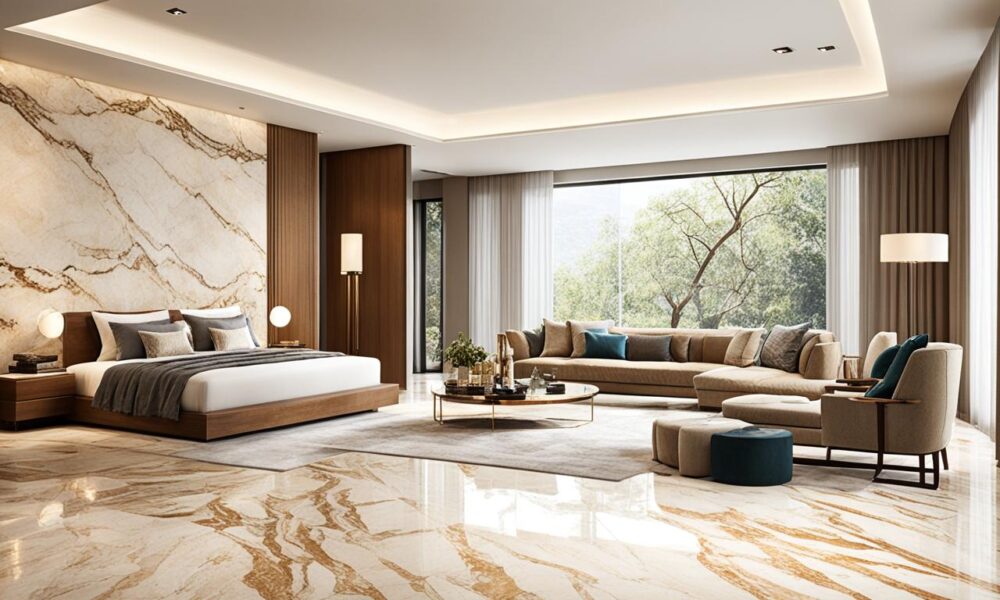Cost of Natural Stones – Luxury or Affordable?
When weaving the tapestry of design for a personal haven or a grand institutional space, one often faces the crossroads of selecting the right material that strikes a balance between opulent beauty and pragmatic costing. Echoing the realms of nature, natural stone emerges as a crowning player in the arena of construction and design, carrying the reputation of being a symbol of both luxury and exclusivity. Yet, the perception of luxury stone materials bearing hefty price tags is frequently a misconception shadowing the true value these gifts from the earth hold.
Indeed, natural stone prices fluctuate within a spectrum that accommodates both grandeur and frugality. When considering the cost of natural stone, it’s the tale of two pricetags: the upfront investment and the unfolding story of longevity and endurance. Through a lens that captures the entirety of a project’s lifespan, one might find that the cost of natural stone aligns harmoniously with the scrolls of prudent budgeting, proving that affordable natural stone is not just a myth but a grounded reality for those who dare to look beyond initial outlays.
Envisioning spaces that span beyond passing trends requires materials that promise permanence. And so, one begins to explore the confluence where enduring elegance meets financial savvy, thus defying the constraints of budgets without compromising the dream of luxury.
Key Takeaways
- Natural stone serves as a beacon of both sophistication and practicality, challenging the view of exclusivity.
- The cost of natural stone reflects not just initial purchase but also long-term savings and value.
- Decoding the life cycle costs can reveal the surprising affordability of high-quality natural stones.
- A diverse price range ensures that there are natural stone options for varying budgetary requirements.
- Longevity and minimal maintenance are key factors that make natural stone prices more cost-effective over time.
- Diligent selection and planning can secure luxury stone materials that once seemed beyond reach financially.
- Understanding the full financial narrative of natural stones allows buyers to invest smartly and sustainably.
The Allure and Misconceptions About Natural Stone Costs
The mesmerizing beauty and timeless elegance of natural stones like granite have long been embraced by architects and interior designers. Known for their unique patterns and superior quality, they bring an air of sophistication to any space, compelling many to question, “Are natural stones expensive?” Contrary to popular belief, natural stone can indeed be a viable option even for those budgeting for natural stones with a keen eye on finances, especially when considering the long haul.
Delving into the quintessence of natural stone prices often reveals a surprising twist in the narrative of costly materials. The initial cost must not be the sole focus when assessing the value of natural stones. It’s the durability—spanning decades—that quietly crafts its reputation as a cost-effective contender in the marathon of building materials. Understanding project life cycle costs becomes crucial in busting the myth of exorbitant stone expenditures, particularly for enduring structures like government or university buildings where longevity and minimal upkeep are paramount.
True affordability is measured not by the immediate price tag, but by the years of service and elegance it brings with minimal additional investment.
Scrutinizing the cost of natural stone within the context of its prolonged lifecycle not only aligns it with pragmatic budgeting but also places it as a fiscally responsible choice for the discerning buyer.
- Granite’s long-lasting nature makes it a frontrunner for projects focused on legacy and permanence.
- Less frequent repairs and maintenance for materials like granite showcase the cost-saving grace of natural stones.
- The allure of natural stone lies in its potential for a value-packed proposition, marrying cost efficiency with visual splendor.
In conclusion, when weighed against the test of time, the cost of natural stone resoundingly echoes the sentiment of affordability. Unlocking the fulcrum between first impressions and a calculated understanding of natural stone economics paves the way for broader adoption of this regal material, dissolving any misplaced preconceptions regarding its expense.
Lifecycle Value: Are Natural Stones Expensive in the Long Run?
When embarking on the quest for the perfect building materials, the allure of natural stones often captivates the imagination with images of grandeur and elegance. Yet, one crucial question lingers in the air—does the initial splurge on materials like granite or marble truly stand the test of time in terms of cost-effectiveness? To unravel this enigma, a comprehensive dive into the true lifecycle cost of natural stone is paramount.
Let’s venture beyond the sticker shock and examine what you’re actually purchasing when you select natural stone.
Understanding Life Cycle Cost of Natural Stone
It’s not merely about the upfront pricing for natural stones, but rather a holistic view of the investment over the years. The concept of life cycle cost offers a broader perspective, shedding light on not just the initial price but the overall expense incurred throughout the lifespan of the material. The intrinsic longevity and steadfast durability inherent to natural stones often lead to a remarkable revelation—they may very well be far more affordable natural stone options than previously perceived when considering their extended service life and minimal need for replacements.
Factors Influencing Long-Term Affordability
Several critical factors contribute to the economical appeal of natural stones over decades. For example, the climatic resilience that certain stone types like granite offer, ensures their survival through varying weather patterns—a vital consideration for projects in areas prone to freeze-thaw cycles. The intended use also frames the narrative of cost, as high-traffic zones demand materials that laugh in the face of wear and tear, ultimately curbing the propensity for repairs and thereby budgeting for natural stones more thoughtfully.
Natural Stone: An Investment in Durability
As cityscapes expand and public spaces burgeon, the need for robust materials soars. Natural stone admirably rises to this occasion, with granite and similar materials serving as stalwart guardians against the elements and time. Their resistance to degradation in busy urban quarters means fewer touch-ups over the years—a money-saving grace that can transform a seemingly high-end natural stone into a beacon of cost-efficiency for generations.

When positioning the cost within an investment framework, the narrative of natural stone prices morphs from short-lived extravagance to a strategically sound, long-term allocation of funds. The robust nature of these materials doesn’t just promise a one-time enhancement but continues to deliver both function and beauty far into the future, enticing even the most budget-conscious planners to tilt in favor of these geological wonders.
Investing in natural stone is not an expense; it’s an investment in perennial aesthetics and steadfastness that will reward for years to come.
Ultimately, when one casts a look beyond the initial expenditure and measures value through the lens of decades, the lavish appearance of natural stones may, in reality, be draped in the fabric of astuteness and affordability.
Price Spectrum of Natural Stone Countertops
The market for natural stone countertop cost is as diverse as it is dynamic, with a plethora of options that can cater to the full range of aesthetic desires and budgetary constraints. Revealing a wide array of pricing, natural stone countertops traverse the gamut from the more affordable natural stone selections to the upper echelon of luxury stone materials. This variance in price ensures that both modest renovations and opulent designs can incorporate the allure of stone.
For the cost-conscious consumer, options such as slate begin at a more palpable price point of approximately $50 per square foot installed. These offerings provide the durability and distinctive appeal of natural stone without the strain on financial resources.
On the other end of the spectrum, for those who seek the pinnacle of extravagance and exclusivity, materials like labradorite shine at price points that may ascend to $300 per square foot installed. Here, the stone becomes not merely a feature but a statement—a testament to luxury and taste. Such stones are chosen not solely for functionality but as an intrinsic element of the area’s character and ambiance.
Intermediary choices, such as granite, marble, and quartzite, offer a broad range of costs, marrying the aesthetics desired with the practicality required. Their costs fluctuate based on a myriad of factors, such as the rarity of the stone, the complexity of installation, and the stone’s grade and finish.
| Stone Type | Starting Cost Per Square Foot Installed | Average Max Cost Per Square Foot Installed |
|---|---|---|
| Slate | $50 | $100 |
| Granite | $80 | $150 |
| Marble | $40 | $150 |
| Quartzite | $65 | $150 |
| Labradorite | $200 | $300 |
The considerations impacting prices are as layered as the stones themselves. Notably, the intricacies of extraction, shipping costs, and the amount of wastage during cutting are woven into the final number. Moreover, the art of installation, requiring skilled craftsmanship, affects the overall investment—one that arguably redeems itself manifold through years of service and visual delight.
Emerging through the veils of pricing and perception, natural stone remains a versatile choice suited for both the temple of opulence as well as the sanctuary of simplicity.
The discourse around natural stone countertop cost must evolve from a static observation to a dynamic conversation, considering the various price points and the lifespan value of the materials in question. With a thoughtful approach, the feasibility of incorporating natural stone into any project becomes a vivid reality, dispelling the fog that obscures its affordability and elegance.
How to Strategically Budget for Natural Stones
Understanding the full scope of natural stone prices is key when integrating these materials into your project. The varying costs of luxury stone materials and more affordable natural stone types mean that options are available for a wide range of budgets. Taking a strategic approach, savvy planners look beyond initial expenses to the extended durability and timeless elegance that natural stones provide.
Choosing the Right Stone Within Your Budget
Finding a balance between budgeting for natural stones without sacrificing quality can be achieved by considering stones like slate and engineered options. These alternatives offer the desired robustness and style, aligning with more affordable natural stone aspirations. Moreover, by projecting their long-term value, one can ensure a cost-effective decision that stands the test of time.

Cost-Saving Tips: Maximizing Value
To optimize the cost of natural stone, one might consider tiles over slabs, which can offer the same aesthetic at a reduced price. Similarly, opting for common granite colors or non-premium grades of stone achieves economical savings while adhering to high standards of beauty and functionality. Such strategies enable the inclusion of natural stone prices that seem indulgent, all the while adhering to a well-orchestrated budget.
Adopting cost-saving measures does not entail a compromise on quality—on the contrary, it is about making informed choices that meet both aesthetic and economic benchmarks.
Alternatives to High-End Natural Stones
For those seeking the luxury of high-end natural stone without the accompanying price tag, materials such as engineered quartz or porcelain represent attractive alternatives. These engineered stones offer a spectrum of colors and patterns that retain the desirable characteristics of their natural counterparts, making them a compelling substitute for those on a budget.
The journey to selecting natural stones need not be an ascent up a steep financial incline. With a tactical approach that evaluates both the immediate and ongoing natural stone prices, achieving an ambiance that exudes luxury while remaining economically attainable is not only possible but highly probable.
Conclusion
As we delve into the varied landscape of natural stone prices, a clear narrative emerges, debunking the myth that all natural stones are a reserve for the deep-pocketed. Far from being a monolith of extravagance, the market displays a spectrum, revealing that affordable natural stone options exist alongside their more opulent counterparts. Those embarking on the odyssey of selecting elegant surfaces are animated by a newfound perspective—an enlightenment that luxury stone materials are not solely defined by their lofty price tags but also by their enduring worth and contributions to a space’s narrative.
When budgeting for natural stones, astute planners and homeowners alike consider both the immediate and cumulative costs, peeling back the layers of pricing for natural stones to recognize their long-term value. Investments in quality materials such as granite, marble, or even engineered alternatives bear fruit in durability and minimal maintenance, weaving these selections seamlessly into lifestyles that blend practicality with sophistication. Does this then mean that high-end natural stone is out of reach? On the contrary, the wise allocation of resources toward these geological treasures makes even the zenith of luxury a tangible prospect for more than just a select few.
Ultimately, the question, “Are Natural Stones Expensive?“, is met with a multifaceted answer, where natural stone prices reflect an intimate dance of cost and longevity, and where the value becomes as clear as the materials themselves. It is within this understanding that choices are made, not on frugality alone but on the vision of a home or edifice that will stand the test of time, embellished in the natural allure that has captivated humankind through the ages.



